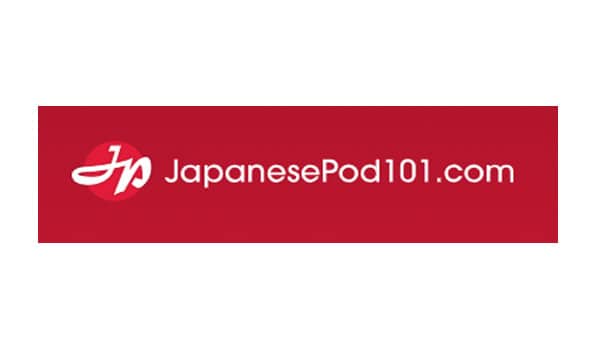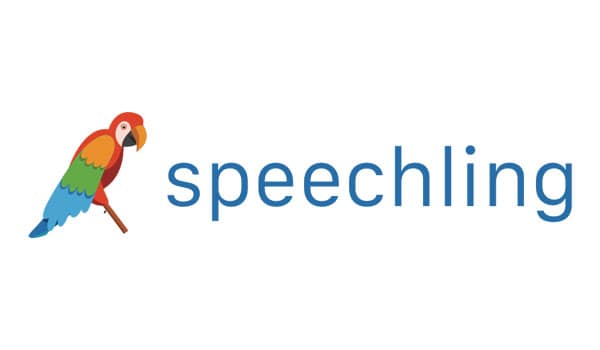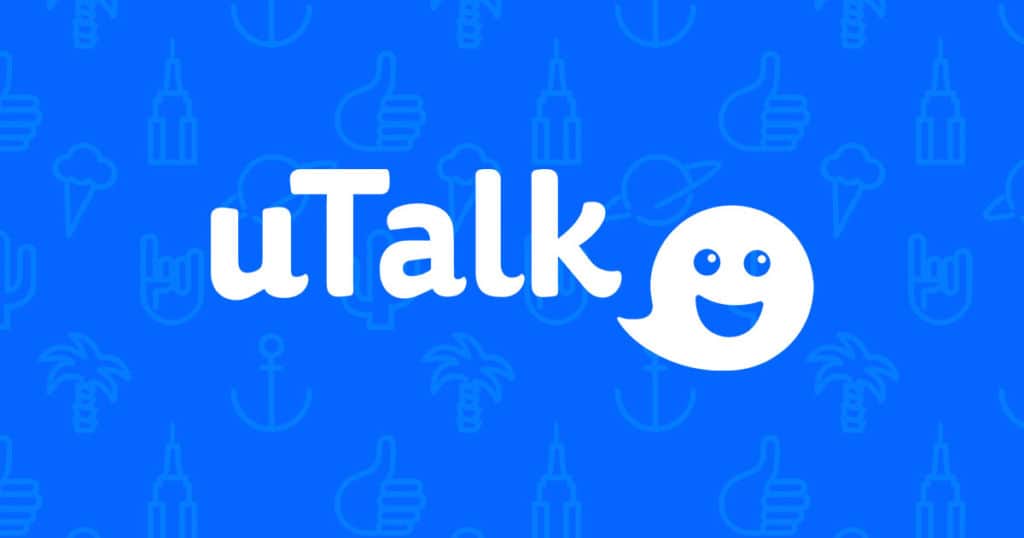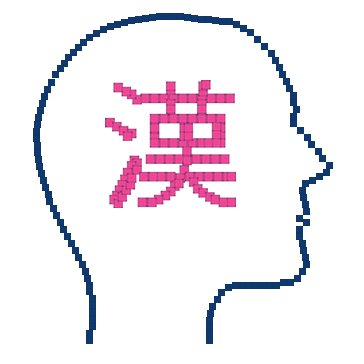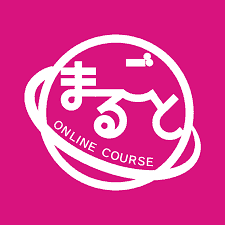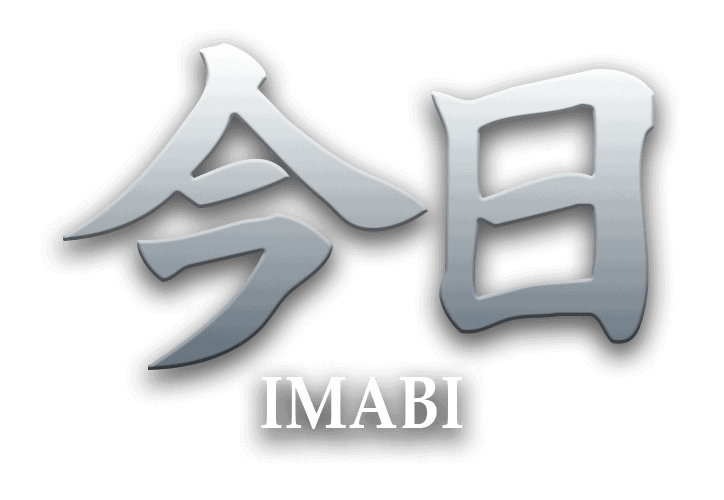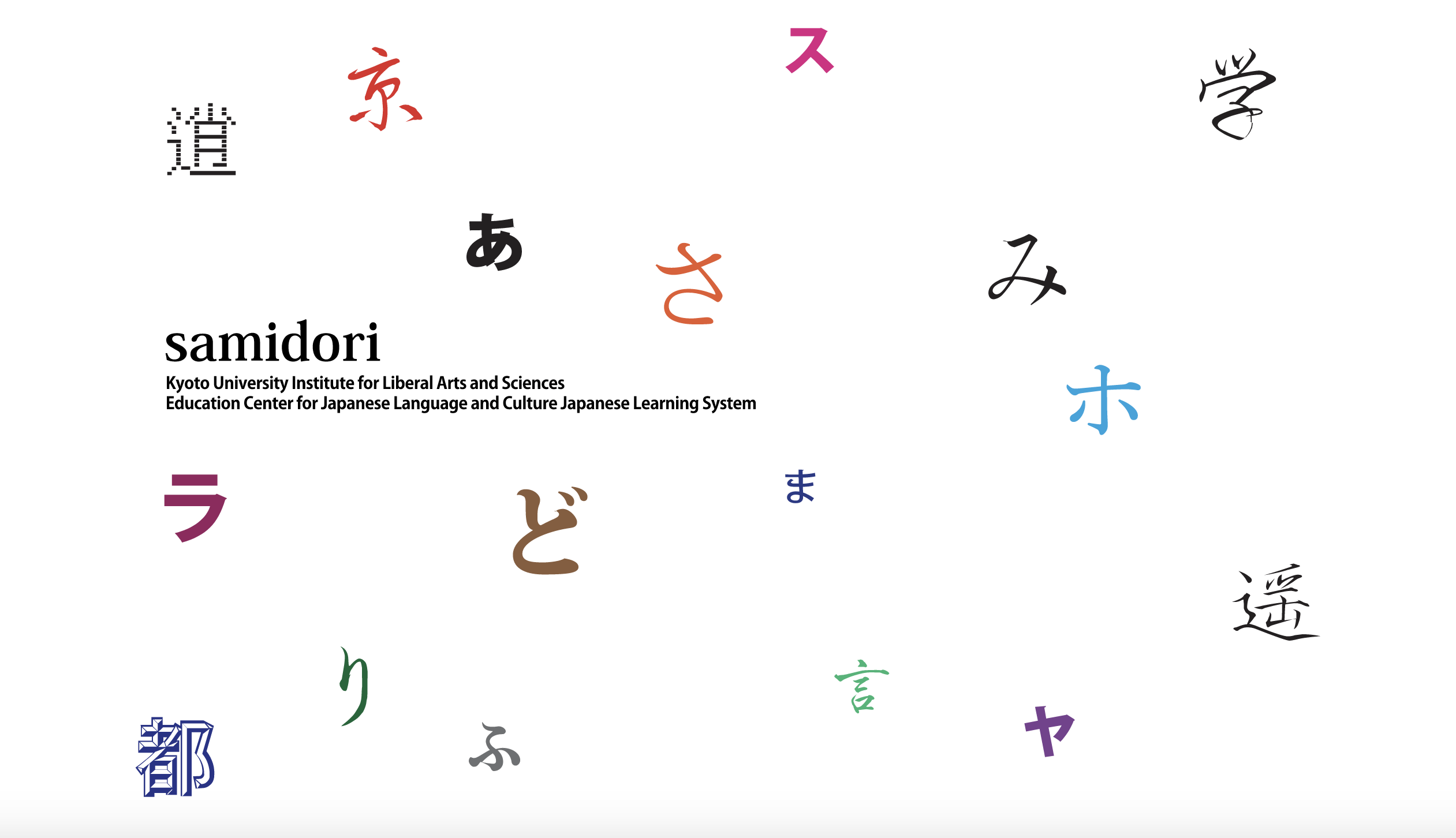Japanese is an undeniably tough language. But it is poetic, musical, fascinating, and learning it is worth all the effort. You’ll visit temples in Kyoto, and otaku towns in Tokyo, watch un-dubbed Studio Ghibli movies, and make Japanese friends all over the world.
Furthermore, the right Japanese course will help you make significant progress in your studies. You’ll be speaking with confidence, understanding kanji, and perhaps most importantly, having fun while learning.
Keep in mind that not all Japanese courses are the same. Some focus on listening, others on grammar, and others on kanji.
Our list of courses will have you developing a good understanding of Japanese grammar, speaking correctly and keep you motivated while learning. It may be easy to believe that Japanese is an impossible language to learn, when really, you just need to change your study materials.
So we’ve rounded up our top online courses for learning Japanese. Each one gets a rating of at least 3.5 out of 5 stars, which puts them above average here on All Language Resources. Whether you’re looking for a beginner course, a course to hone a specific skill or an affordable Japanese leaning course, we’ve got you covered.
Table of Contents
Table of Best Courses to Learn Japanese
Links below will send you to the course websites, and the course details are down below:
OVERALL BEST
Learn Japanese Through Reading and Listening to a Story: StoryLearning Japanese Uncovered
Slow but Good Quality Audio Courses: Pimsleur Japanese
Good Solid Japanese Course: Rocket Japanese
BEGINNER’S COURSES
Best Beginner Course With Engaging Stories: StoryLearning Japanese Uncovered
Compare Your Pronunciation to a Native Speaker’s: Mango Languages
READING AND LISTENING
Heaps of Audio and Video Classes: JapanesePod101
Read Your Favorite Content: LingQ
Textbook-esque Course With Lots of Vocabulary: Human Japanese
Japanese Classes Plus a Huge Amount of Free Self-Study Material: Wasabi
SPEAKING AND WRITING
Best for Improving Oral Communication Skills: Pimsleur Japanese
Good for Intermediate Students Wanting to Practice Speaking: Glossika
Best For Checking Your Japanese Pronunciation: Speechling
VOCABULARY ACQUISITION
Most Enjoyable Vocabulary Practice: Memrise
Best for Learning Key Words & Phrases: uTalk
A Decent Course With a Useful Social Feature: Busuu
Fun App With Clear Grammar Explanations: Lingodeer
Well-Organized Grammar Lessons That Go Up to N1: Bunpo
Translation-Based Course With Natural Dialogues: Assimil
Kanji-Focused Courses and Games With Some Grammar Explanations: Kanshudo
TUTORS AND LANGUAGE EXCHANGES
Tutoring Help No Matter Your Ability Level: italki
Great Way to Find Tutors and Classes: Verbling
Best Way to Find Language Exchange Partners While Taking Its Audio Lessons: HelloTalk
Overall Best Japanese Learning Courses
This category includes courses that use a curriculum and attempt to teach several aspects of Japanese. They usually end up teaching some skills better than others, but they can make good options for those looking for a more comprehensive way to start learning.
Learn Japanese Through Reading and Listening to a Story
Reading and listening in Japanese as a beginner is tough. It has an extremely fast speech tempo, i.e. people really do speak Japanese faster than Spanish, Mandarin, and English. And when you’re reading, there are no spaces between the words. Unless you recognize them, it’s really hard to isolate them and look them up in the dictionary.
Enter Japanese Uncovered from I Will Teach You a Language. This 20-module course focuses on learning Japanese through a multi-chapter story. In doing so, it will give you lots of reading and listening practice.
First, you’ll read and listen to a chapter. Then you’ll learn the vocabulary from that chapter, followed by the grammar, the pronunciation, and part of the script. Finally, you’ll get some cultural and politeness insights and a quiz. Then, it’s onto the next chapter.
Not everyone likes being pushed into the deep end of the swimming pool – even with armbands. For some learners, Japanese Uncovered will likely be too intense. But for others, it will be a fun way to engage with the language and get more listening and reading practice.
Pros
- Lots of reading and listening practice
- A native speaker gives the pronunciation classes
- It’s fun and interesting
Cons
- Uses a lot of romaji, especially at the beginning
- The review/quiz is very basic for the quantity of information you learn per chapter
- Currently only for beginners
See our Super-Detailed StoryLearning Japanese Uncovered Review
Slow but Good Quality Audio Courses
Struggling to remember vocabulary lists? Tripping over long Japanese words? You might find Pimsleur helps you improve your vocabulary recall and pronunciation.
These audio courses are based on the Pimsleur Method, an approach to language learning that’s based on scientific research. It’s made up of four principles: never learning too much at a time, studying new vocabulary in context, revisiting it after increasingly longer intervals, and giving you time to formulate the correct answer.
The courses contain 30-minute audio lessons in which you’ll listen to new vocabulary being used in conversation, hear brief explanations, and then practice saying and creating the sentences yourself.
It also uses a technique called backchaining to help you learn Japanese pronunciation. If you’re struggling with phrases like ittehaikemasenka/行ってはいけませんか or the infamous sokuon/double consonant, this could be helpful.
Bear in mind that you don’t get much writing or reading practice, while grammar explanations are rare. If you’re looking to build a sound grammatical foundation or want to focus on kanji, you might prefer one of the other options on this list.
Pros
- Well-structured lessons that build on each other
- The lessons encourage active rather than passive learning
- The method is backed up by scientific research
- You can learn on the go
Cons
- The 30-minute-long audio lessons can drag
- Limited focus on grammar
- Very little reading and writing practice
- Visual learners may find it’s not the best resource for them
- The supplementary practice activities feel basic and not overly useful
See our Super-Detailed Pimsleur Japanese Review
Good Solid Japanese Course
Rocket Japanese doesn’t excel in any one specific area, but it’s more well balanced than other Japanese courses I’ve tried. The lessons can be very repetitive, somewhat boring, and rely too much on memorization exercises. But, the various aspects of Japanese are all explained pretty well. Their lessons also push you to speak aloud often while not neglecting things like grammar or Japanese culture. Overall, it’s better than I expected. It will likely appeal more to learners that like a mix of audio and visual content as well as a clearly structured course. Advanced learners, those on a tight budget, or anyone particularly interested in improving their reading and writing skills may want to look elsewhere.
Pros
- Balances speaking, grammar, writing, and listening better than other Japanese courses.
- You’re pushed to speak often and practice the language with lots of exercises.
- There are less corny jokes and obnoxious English repetition found in other Rocket Language courses.
Cons
- There’s too much emphasis on memorization and not enough critical thinking.
- The lessons are very boring and repetitive.
- You’re asked to complete writing exercises before ever being taught how to write.
See our Super-Detailed Rocket Japanese Review
Best Japanese Beginner’s Courses
For you to reach fluency, you need a course that provides a strong foundation of the language. The courses below are our top recommendations for complete beginners.
Best Beginner Course With Engaging Stories
Reading and listening in Japanese as a beginner is tough. It has an extremely fast speech tempo, i.e. people really do speak Japanese faster than Spanish, Mandarin, and English. And when you’re reading, there are no spaces between the words. Unless you recognize them, it’s really hard to isolate them and look them up in the dictionary.
Enter Japanese Uncovered from I Will Teach You a Language. This 20-module course focuses on learning Japanese through a multi-chapter story. In doing so, it will give you lots of reading and listening practice.
First, you’ll read and listen to a chapter. Then you’ll learn the vocabulary from that chapter, followed by the grammar, the pronunciation, and part of the script. Finally, you’ll get some cultural and politeness insights and a quiz. Then, it’s onto the next chapter.
Not everyone likes being pushed into the deep end of the swimming pool – even with armbands. For some learners, Japanese Uncovered will likely be too intense. But for others, it will be a fun way to engage with the language and get more listening and reading practice.
Pros
- Lots of reading and listening practice
- A native speaker gives the pronunciation classes
- It’s fun and interesting
Cons
- Uses a lot of romaji, especially at the beginning
- The review/quiz is very basic for the quantity of information you learn per chapter
- Currently only for beginners
See our Super-Detailed StoryLearning Japanese Uncovered Review
Compare Your Pronunciation to a Native Speaker’s
Looking to polish your pronunciation while learning basic grammar and vocabulary? Mango Languages might be a good option.
It has some things in common with Pimsleur: you’ll listen to a dialogue, get a grammar or cultural explanation, and then practice building your own sentences and questions using the target language. Repetition is a key feature of this method, but unlike Pimsleur, the lesson pace doesn’t feel quite so sluggish.
However, what really makes Mango Languages shine is the ability to record yourself speaking a Japanese phrase and lay it over a native speaker’s. While Japanese pronunciation isn’t too challenging for English speakers, it can be hard to get the difference between similar words like いえ (ie, house) and いいえ (iie, no) or to reproduce that tricky sokuon/double consonant. Mango Languages will help you spot when you haven’t quite got it right.
Bear in mind, however, that Mango Languages is mostly focused on speaking and listening. You’ll need to look elsewhere to learn how to write and read Japanese.
Pros
- It’s great for spotting unnatural pronunciation
- You’ll practice making sentences from the first lesson
- Lessons build on each other well
- Some North American libraries and universities offer free access
Cons
- Limited focus on writing and reading
- Some users find the heavy drilling monotonous
- Only caters for beginner and lower-intermediate learners
See our Super-Detailed Mango Languages Review
Courses to Learn Japanese Reading and Listening
Hone your Japanese comprehension skills with top notch reading and listening material. We recommend the following courses to help you practice these skills whether or not you’re a beginner.
Heaps of Audio and Video Classes
Podcast-lovers will likely enjoy JapanesePod101, which teaches the language through relaxed audio and video lessons with charismatic hosts and often-humorous dialogues.
There are plenty of lessons to choose from, but if you’re not sure where to get started, just pick a “pathway” or specific series.
The lessons are mostly dialogue-centric. You’ll listen to a target dialogue, and then the hosts will break it down for you line by line. Often (but not always), the lessons build on each other, using material from past lessons while also introducing a new grammar point and some vocabulary.
That said, there is a very limited focus on reading and writing Japanese, so you’ll want to pair JapanesePod101 with some extra resources or a textbook like Minna no Nihongo or Genki.
Pros
- Huge number of lessons with various hosts
- Premium subscribers get access to extra features, including topic-specific flashcard decks
- Voice recorder function
- Fairly decent for grammar
Cons
- Limited reading and writing practice
- Too much English, especially at higher levels
- Can feel unstructured
See our Super-Detailed JapanesePod101 Review
Read Your Favorite Content
LingQ is a language-learning platform that focuses on extensive reading for over 30 different languages. You can import your own content or choose from the community library of books, articles, podcasts, YouTube videos, and more.
The app highlights unknown words across every lesson and makes them reviewable via different types of SRS flashcards. The more you read, the more accurately you will be able to identify content that is suitable for your level.
Although I did not find it beneficial for languages I had never studied before, I think LingQ can be helpful for upper-beginner to advanced language learners who enjoy reading. It is especially helpful if you struggle to find graded readers in your target language.
Pros
- Easily import almost any material you want to study
- Use SRS flashcards to quiz new words from a specific page
- Each lesson in the library displays the percentage of known and unknown words based on reading history
- There are many dictionaries to choose from for definitions
Cons
- Reviewing words is chaotic
- The extra features are overpriced and can be found other places for cheaper
- Very little of the content is original. Much of it was uploaded by users from other places
- The free version is extremely limited
See our Super-Detailed LingQ Review
Textbook-esque Course With Lots of Vocabulary
Fed up of apps and courses that expect you to pick up Japanese without any explanations? Try Human Japanese instead.
This course feels like an interactive textbook, complete with detailed explanations, cultural notes, word lists, chapter reviews, and more. If you liked studying languages in school, you’ll probably like Human Japanese.
Bear in mind that you’ll dive into Japanese vocabulary and grammar before you’ve learned the kana. This could trip you up later on. For example, when you first study toire, meaning toilet, you’ll see it written in hiragana – even though it should be written in katakana. Given that the course also shows the romaji version of beginner-level vocabulary, this is a strange and unnecessary choice that could get confusing.
You’re probably also best pairing it with a flashcard app to help you remember the extensive vocabulary lists. Try something like Anki or one of the Human Japanese courses on Memrise.
Pros
- Excellent breakdowns
- Engaging tone
Cons
- Limited practice opportunities
- The amount of vocabulary can be overwhelming
- Sometimes uses the wrong kana in beginner lessons
- Difficult to navigate on your mobile
See our Super-Detailed Human Japanese Review
Japanese Classes Plus a Huge Amount of Free Self-Study Material
There’s nothing spicy about this online school, but there’s plenty of mouthwateringly good resources.
There are two main ways to learn Japanese with Wasabi: you can sign up for one-to-one online classes, or you can study by yourself using their extensive amount of self-study material.
The classes are subscription-based: you sign up for a monthly pack and can add extra classes as and when you wish. The teaching is typically done in Japanese, but you can request an English-speaking teacher if you’re a complete beginner.
The self-study materials, meanwhile, include grammar guides, graded readers with audio recordings, video lessons, and more. They do not include drills or practice activities, so you’ll have to create your own tasks and revision tools. However, there’s a wealth of information that you could use to structure your studies or simply supplement other courses and textbooks.
Pros
- Reading and listening practice
- Grammar and pronunciation guides
- Video and text lessons
- Affordable one-to-one classes
Cons
- If studying by yourself, you have to create your own practice drills
Courses With Japanese Speaking and Writing Emphasis
Working on your productive language skills can be challenging but it is necessary. We recommend these courses to help you practice Japanese pronunciation as well as how to correctly write Japanese characters, words and sentences.
Best for Improving Oral Communication Skills
Struggling to remember vocabulary lists? Tripping over long Japanese words? You might find Pimsleur helps you improve your vocabulary recall and pronunciation.
These audio courses are based on the Pimsleur Method, an approach to language learning that’s based on scientific research. It’s made up of four principles: never learning too much at a time, studying new vocabulary in context, revisiting it after increasingly longer intervals, and giving you time to formulate the correct answer.
The courses contain 30-minute audio lessons in which you’ll listen to new vocabulary being used in conversation, hear brief explanations, and then practice saying and creating the sentences yourself.
It also uses a technique called backchaining to help you learn Japanese pronunciation. If you’re struggling with phrases like ittehaikemasenka/行ってはいけませんか or the infamous sokuon/double consonant, this could be helpful.
Bear in mind that you don’t get much writing or reading practice, while grammar explanations are rare. If you’re looking to build a sound grammatical foundation or want to focus on kanji, you might prefer one of the other options on this list.
Pros
- Well-structured lessons that build on each other
- The lessons encourage active rather than passive learning
- The method is backed up by scientific research
- You can learn on the go
Cons
- The 30-minute-long audio lessons can drag
- Limited focus on grammar
- Very little reading and writing practice
- Visual learners may find it’s not the best resource for them
- The supplementary practice activities feel basic and not overly useful
See our Super-Detailed Pimsleur Japanese Review
Good for Intermediate Students Wanting to Practice Speaking
Glossika has a ton of language options, which is the main highlight of the program. There are audio drills for listening and speaking plus comprehension. If you’re a beginner or intermediate speaker, you can pick up quite a bit of Japanese with the repetitive lessons.
The drawbacks, however, include the steep price—but it’s a worthwhile tradeoff if you’re working on multiple languages at a time.
Pros
- One subscription delivers access to all Glossika languages.
- Each language has a ton of audio resources.
- Repetitive lessons help drill the point home no matter what aspect you’re studying.
Cons
- The price is really high compared to just about every other decent resource.
- Some courses seem to have errors.
- You’ll need to be motivated—the repetitive nature of the program can get boring.
See our Super-Detailed Glossika Review
Best For Checking Your Japanese Pronunciation
Speechling is a website and app that makes it easy to improve your speaking skills in several languages. The free version is an incredbily valuable resource that makes it easy to practice mimicking native speakers. The Unlimited Plan provides unlimited corrections of your recordings by a teacher.
Pros
- An excellent method to improve your speaking abilities and get feedback from a real teacher
- Answer the Question, Describe the Image, and Freestyle mode are great for higher levels
- You can switch languages at any time
- Truly unlimited recordings with quick feedback
Cons
- Absolute Beginners should learn the basics elsewhere first
- You’ll need to learn how to make the sounds of your target language on your own
- The amount of time given to record sentences can be too shortThe amount of time given to record sentences can be too short
See our Super-Detailed Speechling Review
Learn Japanese Vocabulary and Grammar
Without vocabulary and grammar, understanding and mastering a language is impossible. They are the basis of all areas of communication. The courses below have their own methods of providing you with lots of vocabulary and grammar practice to help you improve.
Most Enjoyable Vocabulary Practice
There are two ways to study a language with Memrise. One is to use one of the many free, user-created vocabulary or phrase decks. These sometimes come with images or audio, and you’ll be able to practice them efficiently with a spaced repetition system. Beware that quality does vary from course to course.
The other way to use Memrise is to study one of the official Memrise courses. These are of a higher quality than the free courses and even include videos. Partial access to these official courses is available for free, but you’ll need to purchase a subscription to get full access to grammar lessons and extra features. Learners at lower levels will get the most out of these courses.
It’s worth noting that the full, official Memrise courses are only available through the app. The browser versions of these courses are limited.
While it does have decent official courses, Memrise is probably best used as a source of vocabulary review and for learning new words.
Pros
- There are a lot of free courses available
- Practice is efficient with spaced repetition
Cons
- The free courses are of varying quality
- You may need to supplement your study with other resources
See our Super-Detailed Memrise Review
Best for Learning Key Words & Phrases
This is another app with courses available in a staggering number of languages. It’s essentially a slick flashcard app with several built-in memorization games and some opportunities for recording yourself speaking to practice pronunciation. It won’t give you any grammar practice or teach you how to form your own sentences, but it can make an inexpensive way to memorize some useful set phrases.
Pros
- Each phrase is recorded by a male and female native speaker
- You frequently get to hear recordings of yourself producing the language
- The price is very affordable
Cons
- The Memory Game exercise felt like a waste of time. It’s difficult to get a perfect score even if you know the language well
- Practice phrases are random
See our Super-Detailed uTalk Review
A Decent Course With a Useful Social Feature
Busuu offers instruction in 11 different languages and is similar in approach to Babbel. The interface is exceptionally nice with this one, as is the nifty social feature. The feature allows users to get feedback from others on their pronunciation and writing skills and is free to use.
Practice happens through interactive activities with native speaker audio that are accompanied by grammar explanations, though they might not be the most in-depth explanations you’ll find. Overall, Busuu is a potentially good place to get practice in a wide variety of Japanese skills, especially for those at lower levels. It’s also hugely popular.
Pros
- The layout is easy to use and engaging
- The conversation lessons are especially useful
- The social feature is great
Cons
- The grammar explanations and practice could be better.
See our Super-Detailed Busuu Review
Fun App With Clear Grammar Explanations
LingoDeer is an entertaining (and kawaii) app that will teach you Japanese grammar, vocabulary, and basic kanji. The company claims it will take you up to B1/N4. However, serious learners will likely want to combine it with other resources, including additional word lists/vocabulary-builders.
Each bite-sized lesson teaches you a grammar point and some vocabulary, which you drill with a variety of practice tasks: writing sentences, identifying the unnecessary word in a sentence, multiple-choice quizzes, and more. The units wrap up with listening comprehension exercises, and you can record yourself saying the target dialogue.
There are character drills, too, but only for 100 kanji. And you can also take their Fluent Japanese dialogue lessons, which go from N5 to N3 and sit alongside the main course.
LingoDeer’s companion app, DeerPlus, has additional vocabulary, grammar, and comprehension exercises. It’s a fun expansion option that will add some variety to your studies, but it isn’t included in your premium subscription.
Pros
- Decent introduction to kana and beginner-level kanji
- Clear grammar explanations
- Listening comprehension activities
- Fun but effective
Cons
- Subscribing to two different apps, while optional, is annoying
- Serious learners will want to combine it with other resources
- Only includes character drills for 100 kanji
- No speaking feedback
See our Super-Detailed Lingodeer Review
Well-Organized Grammar Lessons That Go Up to N1
Let’s be honest: Japanese grammar and sentence structure can be challenging. And although learning vocabulary, writing kanji, and speaking are important activities, sometimes you just want a resource that will cover the main grammar points at each JLPT level. That’s where the app-based course Bunpo – not to be confused with BunPro (review) – comes into play.
Bunpō means grammar, and this is the course’s main focus. However, it also teaches the kana and basic vocabulary in the elementary level.
Once you’re into the JLPT levels, each course is divided into themes which are further divided into topics. For example, the first lesson of N5 is on the basic sentence structure, with lessons on the standard declarative sentence, questions, indicating possession, negatives, and も/also.
The lessons themselves start with an explanation and plenty of example sentences, followed by some practice activities. These are a little dull and monotonous, but the grammar is broken down well. To get the most out of this course, try making your own sentences afterwards.
Pros
- Well-structured
- Good for grammar and phrases
- Lots of example sentences
- Can toggle kana/romaji on and off
Cons
- Best used as a supplementary resource
- No speaking or listening comprehension
- Not as engaging as other courses
Translation-Based Course With Natural Dialogues
With Assimil, you can try learning Japanese through immersion, no matter if you’re in Nebraska, the Welsh Hills, or Auckland. Or that’s the theory, anyway.
The Assimil courses are designed to replicate the way children learn: by hearing how native Japanese speakers talk and eventually mimicking them. In fact, it’s not until lesson 50 that you begin speaking Japanese and actively learning grammar. Until that point, you’ll just be listening, translating, and doing comprehension exercises.
Assimil’s been publishing language textbooks for almost a century, and in recent years, they’ve also turned their hands to online courses. The brand has some passionate fans who believe the Assimil method helps them achieve conversational fluency.
However, it’s not for everyone. If you’re itching to start speaking Japanese from day one or prefer not to focus on translation, take a look at one of the other courses on this list.
Pros
- Realistic dialogues
- Extremely thorough grammar indexes and appendixes
- Some cultural information
- High-quality audio
Cons
- Heavily focused on translation instead of output
- The pronunciation explanations and feedback could be improved
- Less engaging than other courses and apps
See our Super-Detailed Assimil Review
Kanji-Focused Courses and Games With Some Grammar Explanations
It’s easy to neglect studying kanji, but Kanshudo’s structured course and games will help keep you on track.
In the free 20-lesson beginner course, you’ll be introduced to five different kanji in each lesson, along with some example words and sentences. You can practice tracing the kanji on your phone and tablet, and finish up with some games to check your memory. There are also some interspersed grammar points.
However, Kanshudo is best used as a supplementary resource. The grammar isn’t drilled, while the vocabulary is at times not explained very well. For example, when you learn the kanji 大 for big in lesson one, you’re also shown how it turns 学生 into 大学生, university student. Unfortunately, however, the text forgets to mention that 学生 means student, so you don’t see the relevance of this. It’s still a useful lesson overall, but it would be even more effective if you knew some basic Japanese vocabulary before taking the course.
The intermediate course will teach you 1,000 kanji, but with the exception of the first three lessons, it’s behind a paywall. This course is a more interesting one since you’ll practice using the kanji in sentences, but it’s still best used alongside other resources.
The website also contains reading materials organized by level and free exercises and drills for some of the most common Japanese textbooks, including Genki, Minna no Nihongo, and Japanese for Busy People.
Pros
- Lots of drills and games
- Great for reviewing kanji
- You can earn Study Points by studying and then exchange them for free access to the Premium content
Cons
- Weak focus on grammar and vocabulary
- Best used as a supplementary resource
Tutors and Japanese Language Exchange
If you need help from a native speaker, then finding a tutor or a language exchange partner is the way to go. With these courses, you can connect with native Japanese speakers who’ll help you improve your Japanese language skills and communicate comfortably.
Tutoring Help No Matter Your Ability Level
italki is the most flexible and affordable place to find a tutor for the language you’re learning. They have a huge number of teachers offering classes to students of over 100 different languages. As a learner, you’ll be able to find a tutor that best fits your learning style, schedule, and personality. Teachers are able to set their own prices and make their own schedule.
Pros
- There are large numbers of teachers available even for less common languages
- You can find skilled teachers even at low prices
- The flexibility to schedule lessons whenever convenient
- The extra features in the italki Community make it easy to ask questions, get your writing checked, and find a free language exchange partner
Cons
- Community features are only available through the app
- You may need to try several tutors before finding one that fits your learning and personality style
- It’s easy to not take classes as often as you should
See our Super-Detailed italki Review
Great Way to Find Tutors and Classes
Verbling is an online language-class marketplace where you can take lessons with teachers of your choice. It has some student-friendly extra features, including a built-in online classroom, flashcards, homework calendar, and a filing system for lesson materials. There are also useful but disorganized forums where you can discuss languages, share writing for critique, and do free language drills and exercises.
The lessons are generally high quality and well structured, plus the filters make it easy to find teachers who specialize in everything from accent reduction to interview preparation.
Pros
- You can find great teachers quickly
- The platform’s extra features, such as teacher-made, personalized flashcards, help you review the material learned in each lesson
- It seems focused on long-term progression as well as immediate student satisfaction
- You don’t have to give out your contact details, thanks to the classroom technology
Cons
- Some teachers don’t use the platform’s flashcards and materials system
- There are fewer languages available than on italki
- You can only pay in US dollars, plus there’s a hidden fee
- The forums need more moderation
See our Super-Detailed Verbling Review
Best Way to Find Language Exchange Partners While Taking Its Audio Lessons
HelloTalk is a mobile app for language learners interested in language exchange. It facilitates communication between native speakers and those learning their language with the use of built-in language tools. It also offers audio lessons in 10 languages as part of a separate subscription.
Pros
- It’s exciting to practice communicating with real people
- The built-in language tools are helpful
- It’s easy to pick up and put down whenever you like
Cons
- It’s too easy to rely on google translate
- It can be hard to find good partners
- The paid audio lessons probably aren’t worth it
See our Super-Detailed HelloTalk Review
Maybe Try These Japanese Learning Courses
There are some courses that are commonly recommended but didn’t make our favorites list. Here are some additional courses that you might like.
BondLingo
BondLingo does it all: a textbook, live video classes where you can ask questions, pre-recorded video lessons for self-study, JLPT quizzes, level test, and vocabulary lists. And it will take you all the way from complete beginner up to N1.
The website also has a blog with posts on everything from the Obon festival to how to describe your sexuality and gender in Japanese. Some of the lessons use a lot of English, but others are predominantly in Japanese. Bear in mind that you can only type in the lessons; there’s no option for speaking (or feedback on your speech).
Japanese Level Up (Jalup)
Jalup promises to help you level up your Japanese, and it does so through a leveled-up flashcards system. Flashcards can be dry, but Jalup does its best to keep it engaging, with sentences from Japanese manga and novels. In fact, you might even recognize some of the content.
Each new flashcard builds on previous ones, while spaced repetition will help you to remember what you’ve learned. You can either use these flashcards on Anki or the Jalup app. The latter is more expensive but includes far more features.
In theory, the structured, nine-level syllabus takes you from the very basics (kana) through to “Jalup Expert”. The two-person team behind Jalup has also mentioned that they hoped to add a tenth and final level at some point.
Udemy
The quality of content you’ll find on Udemy varies significantly from course to course since anyone can add a course. However, that does also lead to some interesting and unique options you won’t find elsewhere. Not surprisingly though, the majority of courses are aimed at beginners in the language.
Be sure to check through the reviews and watch any sample lessons before making a purchase.
edX
edX offers language courses for beginner through to advanced students from various universities on edX. And if you’ve mastered all those, you can even study courses in Japanese about other topics.
The content, quality, teaching style, and price will vary, so it can be hard to know whether a course is a good use of your time beforehand. However, they tend to be freemium, so it’s easy to sample them before committing.
Coursera
Coursera offers online courses from universities around the world, open for registration at any time, and self-paced. Advanced learners can take courses on many different subjects taught in Japanese, and others will be able to find courses teaching the language. Courses are free and many for a fee. Most offer a certification upon completion if you’re willing to pay.
Rosetta Stone
Rosetta Stone is one of the most well-known resources for learning languages. It takes an immersive approach to teaching and is widely used by corporations and individuals alike. High levels of repetition and an absence of translations or explanations are hallmarks of the course. Rosetta Stone course could be most suitable for learners who don’t mind repetitive exercises and prefer to learn from pictures and context rather than translations and explanations. It’s probably not a good option for anyone wanting to significantly improve their speaking or writing skills, or those looking for an engaging course.
ALR Readers Exclusive Holiday Deal!! Get the Lifetime Subscription for 25 languages for $179 (everywhere else it’s $199 right now!). See details on the website.
See our Super-Detailed Rosetta Stone Review
Best Free(mium) Courses for Learning Japanese
Learn Japanese for free with the help of these budget-friendly courses. Take your pick at our Bargain Basement section with a list of free and freemium Japanese courses.
Beginner-Level Audio and Video Course
Looking to dip your toe into the world of Japanese studies? Easy Japanese is a great place to get started.
You’ll learn useful expressions for everyday situations, such as shopping in a bakery or hanging out with friends. The course is structured like a drama, with you learning a bit of Japanese in every session.
The lessons themselves are short and sweet, at just 10 minutes per audio lesson and 30 seconds per video lesson. There’s plenty to learn, however, with a combined 96 lessons.
Since Easy Japanese contains lots of audio recordings, it could also be a good supplementary choice if you’re currently studying with a textbook or app.
Pros
- Accessible and entertaining introduction to Japanese
- Includes cultural insights
- You can save vocabulary to your notebook
- Lots of listening practice
Cons
- Only suitable for beginners
- The organization can be a little confusing
- Limited reading and writing practice
Choose How Much You Want to be Challenged With These Beginner Courses
Maybe you just want some basic Japanese practice before you vacation in Kyoto. Or perhaps you actually want to learn Japanese and are looking for something that will give you a fairly comprehensive foundation. The great thing about Marugoto is that it has courses for both types of learners.
Katsudoo will get you speaking and listening to basic Japanese vocabulary. With Rikai, you’ll study the same Katsudoo lesson, but then you’ll do some extra activities to get you working on kanji, reading and writing comprehension, and more.
The courses use a variety of activities, from audio clips and videos through to questionnaires and PDF downloadables. You can also sign up to study in groups with a tutor who will give you feedback.
Plus, it’s designed to accompany the Marugoto textbook series, so you’ve got plenty of expansion options.
Pros
- Explanations in multiple languages
- Tutor support is available
- Lots of listening comprehension
- Some speaking practice
Cons
- Only for beginners (A1–A2)
- The Katsudoo course has no writing practice and limited reading practice
- Studying Rikai after Katsudoo feels clunky and convoluted
Video Course That Accompanies a Beginner Textbook Series
Intrigued by Japanese, but intimidated by kanji and the very different sentence structure? YesJapan is a relaxed introduction to the language.
Their textbook series, Japanese From Zero!, is fun and easy, while admittedly moving at a snail’s pace. And their video course arguably outshines the books.
You’ll learn vocabulary, grammar, and cultural insights, while the videos feature dialogues and quizzes. You can save key vocabulary and toggle between romaji, kana, and kanji.
As a video course, it’s short on reading and writing practice. However, the native audio means you’ll quickly get used to hearing Japanese pronunciation.
Pros
- Native audio
- You can choose between romaji, kana, and kanji
Cons
- No writing practice
- Superficial in content
Great Spaced-Repetition Flashcards
This powerful SRS flashcard app is one of the most used, and not just for languages. It is the go-to app for free (except on iOS) Spaced Repetition System (SRS) flashcards. It has a simple user interface with various features that more hard-core users can dive into if they choose. Your flashcards will appear according to your natural forgetting curve; the app will test you in increasingly spaced out intervals, with more difficult cards appearing more than once in a session, while easier cards spacing out over weeks — or even months and years.
Pros
- Offers a wide range of features.
- Allows synching across multiple devices.
Cons
- Anki’s interface may be a bit intimidating for beginners.
- The aesthetic isn’t very appealing.
See our Super-Detailed Anki Review
Comprehensive Grammar Course for Dedicated Self-Study
Imabi is not your typical course. It’s an intense series of online text lessons with lots of information – perhaps too much for the average student.
The primary focus is grammar, but unlike other grammar guides such as Tae Kim (review) and BunPro(review), there are also dedicated lessons to vocabulary. There’s plenty of cultural information, too, and some excellent lessons on pronunciation. On the other hand, there are no exercises; drills; or reading, writing, or listening activities. It’s up to you to practice this material.
Beginners could find Imabi intimidating or even demotivating. There’s no gamification here, and the lessons never shy away from the technical aspects of Japanese. However, the information is excellent. Even adept Japanese speakers might learn something from the beginner lessons.
Extremely dedicated students will be able to use Imabi as their principal course, but it’s important to also use external resources to practice writing, listening, reading, and speaking. Alternatively, Imabi makes a great supplementary resource that you can dive into when you want more information about a topic.
Pros
- Exceptionally detailed explanations
- Excellent grammar breakdowns
- Vocabulary and cultural insights
- Material for beginner through to advanced students
Cons
- No exercises
- No reading, writing, listening, or speaking practice
- Beginners will likely find it overwhelming technical and detailed
- For most students, it’s probably best as a supplementary resource
Thorough Beginner Japanese Courses From The University of Kyoto
For beginner students looking for a solid foundation in Japanese, samidori is a great place to start. You’ll learn the kana, vocabulary, grammar, and more, while there’s plenty of listening and reading practice.
It’s not a perfect course, however. You’ll need to look elsewhere to learn how to write kanji, plus there are no speaking and writing exercises. And although they have lessons for lower intermediate students, most of their material is designed for beginners.
That said, the course and lessons alike are well structured. Most lessons follow the same format: the lesson topic and vocabulary is introduced in Japanese and English, then there are example sentences and audio recordings for the target language, and finally you get timed practice questions to check your understanding.
If you’re looking for a free resource that will cover the basics of Japanese, and you don’t care about gamification, flashcards, and other features, then samidori is a great choice. Just make sure to also use a kanji app or workbook and practice speaking and writing.
Alternatively, if you’re looking for something more engaging, try LingoDeer.
Pros
- Comprehensive, well-structured courses
- Lots of listening and reading practice
- Teaches kana, grammar, and vocabulary
- Audio recordings for all new words and phrases
Cons
- Doesn’t teach you how to write kanji
- No writing or speaking practice
- Limited lessons for lower intermediate students
Outdated but Comprehensive Courses
The Foreign Services Institute (FSI) is probably one of the most comprehensive, free language learning resources in the world, together with DLI. Unfortunately, it is very outdated.
With the FSI’s moderate focus on politics, you will probably need to learn and forget several sections of the course. But, if you are motivated and disciplined, you can follow in the steps of past diplomats who persevered through hundreds of hours of self-study course material. Your hard work will pay off when you have your first conversation with a Japanese speaker—though you may want to spend time listening to recent podcasts or videos to update your vocabulary beforehand.
Pros
- It’s totally free and downloadable
- Courses are structured and comprehensive
Cons
- Can be dry and boring
- There’s nothing really fun about learning with FSI—just a textbook
See our Super-Detailed FSI Courses Review
So, What are the Best Courses for YOU to Learn Japanese?
This list definitely doesn’t cover every Japanese learning course available online. It also doesn’t cover all the great resources out there.
To find more resources for learning Japanese, check out our compiled list of the Best App to Learn Japanese, the best Japanese podcasts, and the best Youtube channels for learning Japanese. If you would like to explore a wider range of Japanese learning, have a look at our post on the “Best Way to Learn Japanese – 15 Tips to Try Today“.
We always recommend that you take advantage of multiple resources when learning any language. Although lots of the courses on this post are great, they’re also best when used with other practice methods. There’s lots of options so you shouldn’t have any trouble finding the ones that work for you.
Still struggling to find the course that best fits your learning style and your learning goals? Take a look at the four language features a good a Japanese course should cover. You’ll understand the nature of the Japanese language, narrow down your course options and prepare yourself accordingly.





